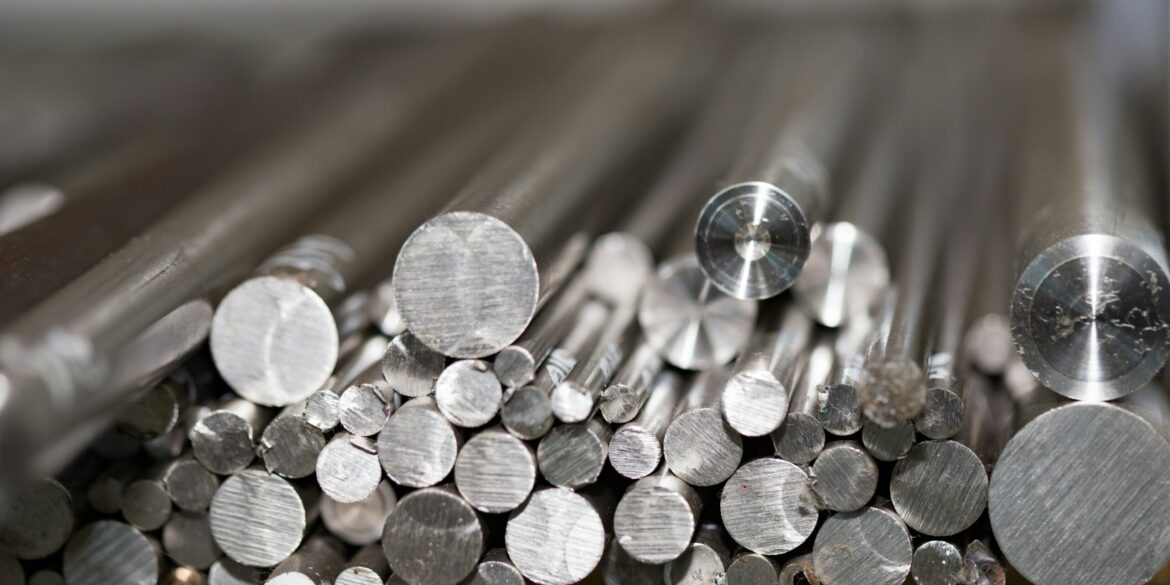In a move aimed at further strengthening domestic manufacturing, President Donald Trump has unveiled plans to impose new tariffs on steel and semiconductor chip imports. This announcement comes as part of his administration’s ongoing effort to reduce reliance on foreign-made goods and stimulate U.S.-based production. The new tariffs, which are expected to be implemented in phases over the coming weeks, are designed to encourage U.S. companies to manufacture these critical products domestically.
Trump made the announcement while aboard Air Force One, en route to meet with Russian President Vladimir Putin in Alaska. In his speech, the president emphasized the importance of these tariffs in advancing U.S. economic interests. He detailed how the tariff structure would start with a lower rate but would progressively increase over time. This gradual approach is meant to incentivize U.S. manufacturers to build and expand their domestic operations while ensuring that the tariffs do not immediately disrupt global markets.
Read also: U.S. Manufacturers Struggle with Rising Costs as Tariff Uncertainty Looms
The tariffs will primarily target imports of steel and semiconductor chips — two sectors that have been integral to the functioning of the U.S. economy. Steel is crucial for industries ranging from construction and automotive to defense, while semiconductor chips are at the core of technological advancements and are used in everything from smartphones to military equipment. By making foreign steel and semiconductor chips more expensive, the administration hopes to incentivize companies to bring production back to U.S. soil, creating more jobs and reducing the country’s dependency on external sources for these critical materials.
This announcement follows a series of earlier actions taken by the Trump administration to increase tariffs on various imported goods. Notably, in early 2025, the administration raised tariffs on steel and aluminum imports by 25%, followed by a second round of increases that pushed the tariff rate to 50%. These tariffs have already had a significant impact on global trade, with countries like China and members of the European Union pushing back through their own retaliatory tariffs.
While these measures were initially met with concern from global markets and trade partners, the Trump administration has maintained that the long-term benefits to the U.S. economy will outweigh any short-term disruptions. According to administration officials, the new tariffs are designed to protect American industries and support job creation by ensuring that U.S. manufacturers are not undercut by cheaper foreign imports. Proponents of the policy argue that these tariffs will help revitalize U.S. manufacturing and provide a much-needed boost to local economies, particularly in states that rely heavily on steel production and technology manufacturing.
Despite the administration’s optimism, there are concerns from various sectors, particularly in the semiconductor industry, about the potential for price increases and supply chain disruptions. Some experts have warned that imposing additional tariffs on semiconductor chips could increase costs for tech companies that rely on these components, potentially passing on the costs to consumers in the form of higher prices for electronics, cars, and other goods. Semiconductor companies are already exploring ways to mitigate the impact of the new tariffs, with some planning to invest in U.S.-based manufacturing facilities to qualify for tariff exemptions.
Industry analysts have speculated that the U.S. government will implement a series of escalating tariff measures over the coming months. This phased approach allows companies time to adjust to the new trade environment while still achieving the broader goal of reducing reliance on foreign production. The Trump administration has also indicated that companies that invest in U.S.-based manufacturing could be eligible for tariff exemptions, though the specifics of this program have not yet been finalized.
The announcement of new tariffs on steel and semiconductor imports is part of President Trump’s broader strategy to enhance American manufacturing capabilities. By encouraging more domestic production and reducing the need for foreign imports, the administration believes it can help strengthen the U.S. economy, create jobs, and improve national security by ensuring that critical materials and technologies are made within the country.
As the policy unfolds, it remains to be seen how these new tariffs will impact global trade dynamics and whether U.S. companies will rise to the challenge by investing in domestic manufacturing. What is certain is that this decision reflects the Trump administration’s ongoing commitment to reshaping trade relations and bolstering the U.S. economy.
Read also: U.S.–Japan Trade Framework Sparks Market Optimism


